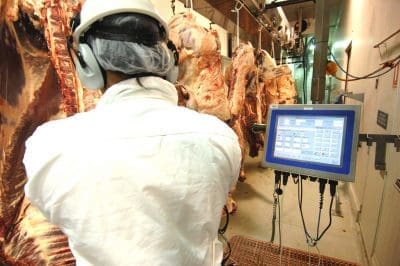THERE’S been a sharp change in the supply/demand dynamics in eastern states processing this week.
A number of large multi-site operators from Queensland to South Australia have withdrawn their direct consignment quotes for the time being, confident that they have kill slots covered for the immediate future.
 Prior to the suspension of quotes, some Queensland operators had reduced rates by 10c/kg on Friday, taking heavy cows to 490c/kg and four-tooth grass ox to 540c/kg.
Prior to the suspension of quotes, some Queensland operators had reduced rates by 10c/kg on Friday, taking heavy cows to 490c/kg and four-tooth grass ox to 540c/kg.
Other Southern Queensland operators who still have active quotes in the market have lowered cow offers to 480c (now 20c behind last Tuesday, dropping in two 10c installments), and heavy grass steers four-teeth back to 540c.
Central Queensland rates (for those processors still offering quotes) are 10c/kg behind those numbers, with North Queensland now 25c/kg in arrears. One CQ site said it was more or less covered for its requirements the first two-thirds of April.
Equally, some processors in southern NSW and eastern parts of South Australia have now withdrawn quotes, given ample bookings for the short weeks ahead.
The developments have met with a sudden, and heavy response from suppliers, with kill rosters in many Queensland and NSW plants now more or less full until around mid-April. Some plants are now taking space bookings only, with prices to be negotiated closer to the calendar date of slaughter.
All this represents a sharp turnaround from only a couple of weeks ago when many processors were claiming to be fairly current in direct consignment bookings.
Virtually overnight, supply has gone badly out of alignment with demand (or perhaps more accurately, capacity) with the national weekly slaughter number not yet exceeding 130,000 head this year – a number achieved only five times since the 2021 season.
While there has clearly been some progress in adding labour to the processor workforce in the past 12 months (see earlier story), the growing supply of slaughter cattle has now caught up in that equation, and could present real congestion problems in the months ahead.
There’s a number of factors in play that are driving the latest sharp change in market conditions:
- Paddocks and roads that were impacted by repeated earlier rain events are now drying out, putting a surge in cattle movements and delivery. A sense that prices might ease as supply grows has motivated some to commit cattle prior to Easter break.
- Despite the generally good to excellent conditions across Eastern Australia, there are dry patches stretching from Central Queensland through northern and central NSW (areas around Gunnedah and Tamworth, and the Riverina), all the way into Victoria. Heatwave conditions in some southern areas this week have only intensified that
- There’s a series of short processing weeks ahead, starting with Easter (two lost days), but also taking in ANZAC Day, May Day, and in some areas of Queensland, local agricultural show holidays. One large Southern Queensland export shed told Beef Central it will lose five working days (effectively an entire week’s kill) over a period of seven weeks through to May.
- Operators that breed, grow and fatten on the same holding are now having to make room for young grower cattle, as winter approaches
- Cash flow is again being raised as a motivator for some cattle producers to sell.
Feeder cattle pricing has also softened this week, with quotes for paddock sales delivered Downs feedlots for heavy flatbacks now around 335-340c, down from 350c/kg only a couple of weeks ago. Black steers are trading this week around 360c, with the premium again starting to grow a little.
As described earlier, forward contracts for 100 day cattle late June delivery have declined 20c/kg, to 680c/kg.
Saleyards trading follows OTH price trend
The correction in direct consignment prices and demand is clearly reflected in saleyards trading early this week, where there have been some sizeable falls in prices on slaughter cows and meatworks steers and bullocks.
There was a much larger offering of 8700 head at Roma this morning, up almost 4000 head on the previous sale. Yearling steers were 10-20c easier, while grown steers 500-600kg topped 286c with bullocks selling to 288c/kg. One buyer secured 90 ox from Roma sale this morning, at prices equivalent to 500c/kg dressed – 40c below the current grid. A full report on heifers and cows at the completion of the sale.
Gunnedah sale this morning yarded 3500 mixed quality cattle, with weaker demand from processors seeing heavy grown steers sell to a much cheaper trend, while the cow market was 20-30c/kg cheaper as supply increases and demand weakens.
Wodonga sale this morning (1030 head) saw heavy meatworks steers fall 10c ranging from 234-292c, with bullocks back 15c, selling from 240-286c. Better cows slipped 30c, selling from 200-235c.
Hot weather limited the Naracoorte offering this morning to 603 head, with heavy cows selling from 172-232c.
Forbes sale yesterday saw heavy steers 20-25c easier selling from 270-300c, while cows dropped 30c with better descriptions 208-226c.



HAVE YOUR SAY